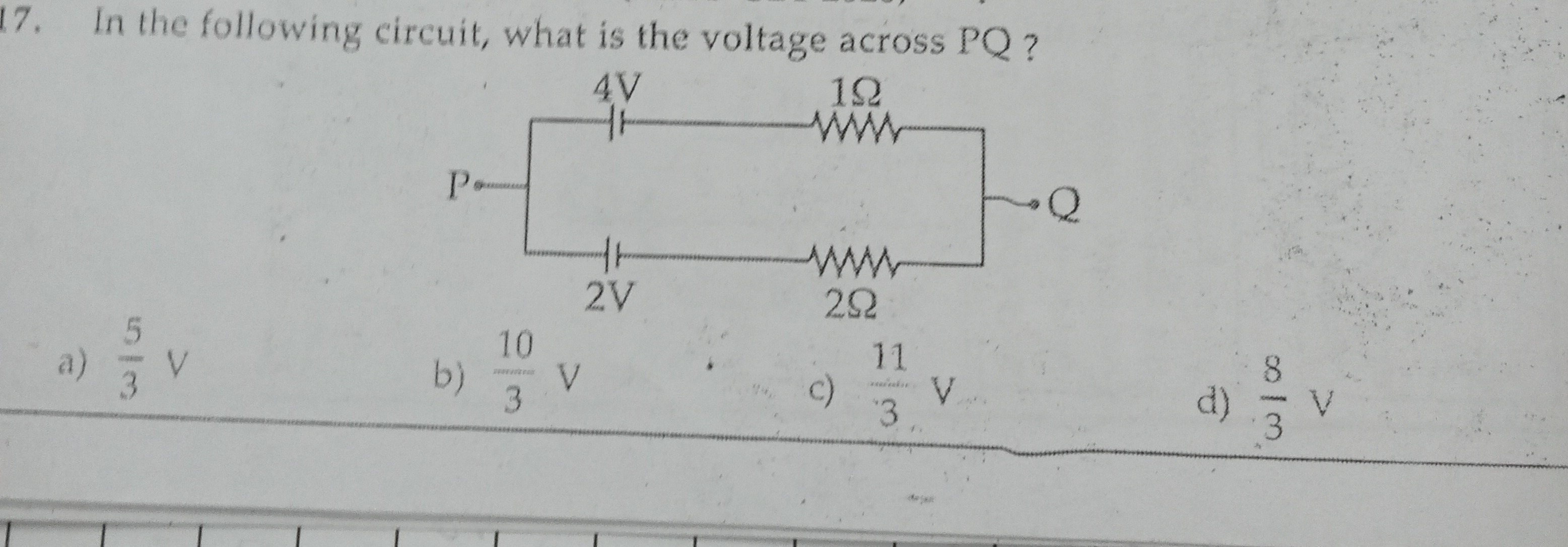Question
Question: In the following circuit, what is the voltage across PQ? ...
In the following circuit, what is the voltage across PQ?

A
35V
B
310V
C
311V
D
38V
Answer
310V
Explanation
Solution
Let the voltage across PQ be V. For the upper branch (4 V source with 1 Ω resistor), the current is
I1=14−V.For the lower branch (2 V source with 2 Ω resistor), the current is
I2=22−V.Since these branches are connected in parallel, in the absence of any external connection (only internal balancing), KCL gives
I1+I2=0.Thus,
14−V+22−V=0.Multiply by 2:
2(4−V)+(2−V)=0⟹8−2V+2−V=0.Combine like terms:
10−3V=0⟹V=310V.Explanation (minimal): Write branch currents as (4−V)/1 and (2−V)/2. Set their sum to zero, solve to get V=310V.
